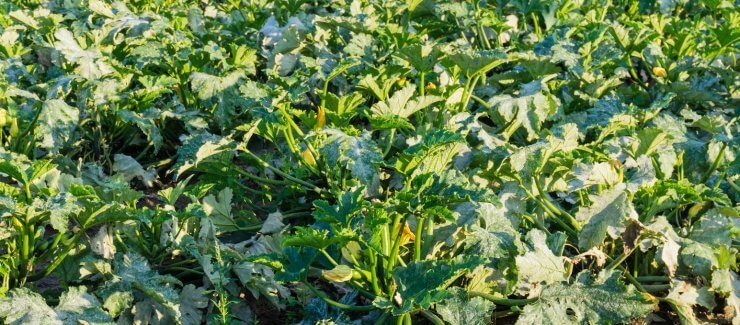
Green rhubarb plants in the sunlight
Rhubarb likes a full day of sun—preferably at least six hours of direct sunlight. It will do OK in partial shade, but unless you live in a zone where the summer gets really hot, an open direct-sun spot is best.
The soil should be well-drained and rich in organic matter. Sandy loam soil is best. Do your rhubarb a favor and be sure to mix in some aged compost before you plant it.
Throughout the growing season, rhubarb will need different types of fertilizer to address its nutritional needs; that’s covered in detail in our Watering, Weeding, and Fertilizing Your Rhubarb Plants section.
In general, rhubarb prefers a soil pH of 6.0 to 6.8, although it tends not to be particular; some gardeners give it a much wider range of 5.5 to 7.5. What it does need is rich, fertile, well-draining soil. Even so, one of your annual gardening tasks should be to get your soil tested. You’ll save yourself a lot of time and aggravation, and your plants will thank you by growing instead of languishing. Your local extension center will have information on how to get your soil tested. For a little bit of preparation work, you can get a lot of information about the composition of your soil.
Rhubarb is a perennial, cool-weather crop; it does best in zones where the temperature doesn’t get much past 75 degrees F. Higher temperatures can result in stalks that are more green than red; they don’t taste especially different, but a lot of people expect their rhubarb to be red. Rhubarb also needs about 500 hours of colder temperatures between 28 and 40 degrees F so it can properly develop new leaf buds; one gardening term for this time is chill hours. Then, in the spring, it needs temperatures of at least 40 degrees F to break out of its dormant state and start growing. If your growing region meets these criteria, then rhubarb may be right for you!
How do you grow your rhubarb—full sun or partial sun? Have you had your soil tested or do you do it yourself? Please tell us your tips and tricks for growing great rhubarb!


 Previous
Previous

